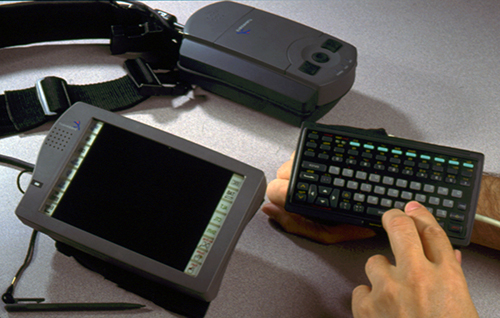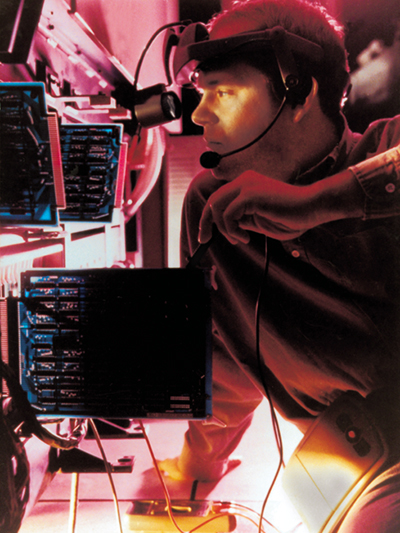Going Paperless
You can easily imagine the mounds of paper work required to certify that payloads are ready for a Space Shuttle mission or to approve equipment for installation aboard the International Space Station.
To lessen document overload, NASA-sponsored development of an Electronic Portable Information Collection system, or EPIC for short.
EPIC stemmed from a NASA Small Business Innovation Research (SBIR) project, sponsored by the Kennedy Space Center. During the project, the SENTEL Corporation of Alexandria, Virginia, designed, built, and tested prototype paperless work authorization procedures for NASA. Initially called the Quality Assurance Portable Data Collection system (QAPDC), this project was a key step to the goal of minimizing paper and maximizing quality for Space Shuttle and Space Station operations. In 1996, NASA awarded SENTEL the prestigious SBIR of the Year Award in the computer software category for that work.
QAPDC was a response to manual and paper intensive Work Authorization Documents, record keeping done for all Kennedy procedures. However, this documentation was prone to inconsistency and error. In addition, complexity was increased due to the involvement of several working groups, contractors, and multiple disciplines. Task coordination and verification proved complex and cumbersome.
NASA wanted a system that could convert a procedure from a word processing document to a database. The procedure could then be executed using a portable computer. Data are now entered electronically, either with keyboard or pen, using handwriting recognition. The system then distributes the data to other terminals. Once a procedure is completed, it is electronically stamped and uniquely identified, converted to a Portable Document Format (PDF), and stored electronically in a documentation system. As a prototype of EPIC, QAPDC was tested and shown to be viable. SENTEL and NASA formed a partnership through a nonreimbursable Space Act Agreement. This permitted the go-ahead to develop the operational version of the system, and the EPIC Procedure System was born.
For NASA, the system has proven itself as a rapid and efficient way to collect data, temporarily store data, transfer data to a central personal computer, permit search and retrieval interactions, and generate task status reports and trend analyses. EPIC has been targeted for use in the Space Shuttle Main Engine Shop and for Space Station ground processing.
SENTEL's leadership role in QAPDC and EPIC led to the 1998 announcement that the company was teaming with two other firms to commercialize a paperless information collection system. In a major commercial venture, SENTEL has joined with configuration management specialist CMstat and data management industry leader, Symbol Technologies. To provide complete worker mobility, SENTEL is augmenting the information collection system by incorporating Symbol Technologies' Spectrum 24™ wireless networking technology. This partnership is also geared to offer the Advanced Process Manager.
According to the SENTEL officials, the Advanced Process Manager™ is a state-of-the-art system for executing maintenance and inspection procedures within a robust product data management framework. Primary market targets for the Advanced Process Manager™ exist in the aerospace and defense sectors for life cycle data management. SENTEL believes that marketing of the Advanced Process ManagerTM is also appropriate for the airline industries, the shipbuilding industry, warehouse and shipping industries, law enforcement agencies, and public utilities.
Advanced Process Manager™ is a trademark of SENTEL Corporation
Spectrum 24T™ is a trademark of Symbol Technologies

Through a partnership with NASA, SENTEL Corporation developed a system that simplifies procedures and documentation.














